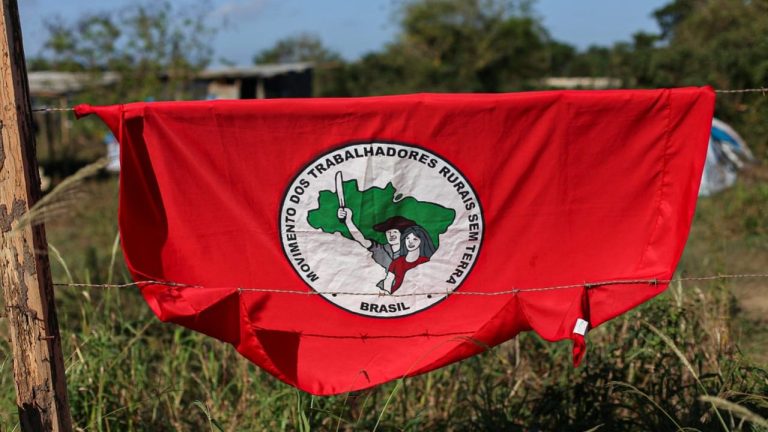Brazil
42% reduction in the deforestation of the Brazilian Atlantic Forest indicates a downward trend
For SOS Mata Atlântica, Lula's veto and the victory in the Supreme Court could consolidate a decline throughout 2023

By Thalita Pires e Lucas Weber
Translated by: Lucas Peresin
From: Brasil de Fato
Data released this Thursday, July 27, by the Fundação SOS Mata Atlântica show that deforestation in the biome fell by 42% between January and May this year. The deforested area was 7,088 hectares in the first five months of 2023, against 12,166 hectares registered in the same period of 2022.
The data is in the new bulletin of the Atlantic Forest Deforestation Alert System (SAD), which is the result of a partnership between SOS Mata Atlântica, ArcPlan and MapBiomas.
The drop in deforestation in the region was received as a positive surprise. Luís Fernando Guedes Pinto, director of SOS Mata Atlântica, stated that there was an expectation that the destruction of the biome would decrease, but it was not possible to predict the magnitude of the change. “The 42% reduction is quite expressive. We had an expectation that it [deforestation] could start to decrease, but we didn’t have a dimension of the size of the reduction”, he says.
He also states that the observation time – five months – allows the indication of a trend. “Caution is still needed, but it is a reasonable period and it is already possible to observe a trend, but not that it is consolidated. We will monitor the evolution throughout the year”, he explains.
Despite this, the director of the foundation is optimistic about the evolution of deforestation indicators. “We imagine that this trend [decrease in deforestation] will become even more intense with President Lula’s veto of the ‘problem’ in the Provisional Measure 1150, the decision of the Federal Supreme Court, the government increasingly structuring the part of environmental inspection”, he says.
The ‘problem’ he refers to is an article inserted in Provisional Measure 1150, inherited from the Bolsonaro government, which postponed the deadline for landowners to adapt to the Forestry Code. Deputy Sérgio Souza (Brazilian Democratic Movement – state of Paraná), former president of the Agricultural Parliamentary Front (FPA), suggested changes that would weaken and make the Atlantic Forest law (# 11.428/06) more flexible.
Among the changes that were suggested – and vetoed by President Luiz Inácio Lula da Silva – were the permission to clear primary and secondary vegetation in an advanced stage of regeneration, ending the need for a technical opinion from a state environmental agency for clearing vegetation in the medium stage of regeneration in urban areas and the end of some environmental compensatory measures for undertakings classified as linear – such as transmission lines and public water supply systems, but, depending on the interpretation, also residential condominiums and resorts.
The biome also had a victory in the Brazilian Federal Supreme Court (STF). Then-president Jair Bolsonaro entered the court with Direct Action of Unconstitutionality (ADI) 6446, in which he questioned the application of provisions of the Forestry Code (Law 12,651/2012) and the Atlantic Forest Law (Law 11,428/2006). In June, the Supreme Court rejected the action.
Details
The drop in deforestation seen between January and May in the Atlantic Forest occurred in most of the states that host the biome, but it was greater in places that deforested more in 2022. The state of Paraná reduced devastation by 54%, followed by Minas Gerais (47%), Santa Catarina (46%) and Bahia (43%). In the states of Espírito Santo, Pernambuco and Rio Grande do Sul there was stability in the indexes. In the states of Alagoas, Rio Grande do Norte, São Paulo and Sergipe, the index increased, but their deforested areas represent less than 12% of the total.
Guedes Pinto, director of SOS Mata Atlântica, points out that there are enclaves of the biome in the Cerrado, which are not accounted for in the bulletin. “The compiled data account only for the limits of the biome established by the IBGE [Brazilian Institute of Geography and Statistics], excluding deforestation in the enclaves of the Atlantic Forest in the Cerrado”, he points out.
This is a region that, he points out, has been showing “a worrying increase in deforestation”, according to analyzes by Inpe (National Institute for Space Research) in the Deter Cerrado deforestation alert system. “Even if it is not part of the area observed by SAD Mata Atlântica in this period, it is an area protected by the Atlantic Forest Law, which demands strong actions for its conservation.”
Edited by: Leandro Melito e Nadini Lopes


